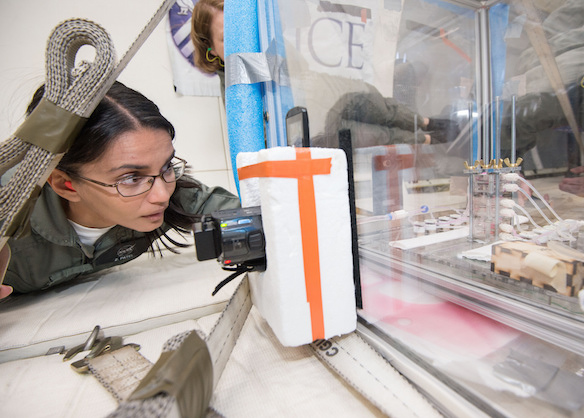Autonomous Cell Culture Apparatus for Growing 3-Dimensional Tissues in Microgravity
PI: Zarana Patel, NASA/Johnson Space Center
PI: Zarana Patel, NASA/Johnson Space Center

- TA06 Human Health, Life Support and Habitation Systems
Long duration spaceflight poses multiple hazards to human health, including increased exposure to radiation, nutritional deficiencies, and physiological changes associated with microgravity. To better understand the molecular mechanisms of space radiation-induced initiation and progression of epithelial cell carcinomas, we are utilizing a unique three-dimensional (3-D) organotypic model (a form of human tissue engineering) that can accurately mimic many epithelial tissues. These 3-D models offer advantages over standard monolayer culture systems because they mimic the morphological features, differentiation markers, and growth characteristics of fully-differentiated normal human tissue and are reproducible using defined components.
We have already developed and tested a prototype of the 3-D cell culture apparatus but are still in the preliminary build phase for our second-generation design. Prior to the previous flight, the apparatus was at TRL 4. Flying the most recent version of the apparatus is critical to its TRL advancement. Several of the developments that allow the apparatus to operate autonomously must be tested in zero gravity before the device can advance to TRL 6.
The capacity to grow and maintain 3-D organotypic cultures in microgravity will be essential for conducting fundamental life sciences research on topics addressed by the OCT Technology Area TA06. Development of a fully-automated cell culture system for microgravity will facilitate this research and dramatically increase the knowledge base required for minimizing the risks of manned spaceflight.
The primary objective of this flight is to test the functionality of an improved automated cell culture system. As with our prototype, testing of this equipment will include establishing liquid-liquid, air-liquid, and liquid-air transitions, all of which are required for the proper growth and development of 3-D organotypic cell cultures. The secondary objective of this flight is to test the functionality of the newly automated parts of this apparatus.
A prototype of this equipment was developed and tested in flight as a part of the NASA Systems Engineering Educational Discovery (SEED) program in NASA’s Microgravity University in the fall of 2009. In the program, a group of five Yale undergraduate students worked with NASA biologist Zarana Patel to design and develop a 3-D culture apparatus that would maintain the air-liquid interface while in microgravity. In the fall of 2010, we worked to improve the design of the 3-D cell culture apparatus to eliminate the problem of air bubble formation. We have also implemented other design changes which include automation of the apparatus so that it would be easier for parabolic flight crew, and eventually astronauts and other microgravity researchers, to operate this equipment.
Technology Details
-
Selection DateAFO2 (Oct 2011)
-
Program StatusCompleted
- 2 Parabolic
Development Team
-
PIZarana Patel
-
Organization
-
SponsorNASA
-
PartnersRice University

